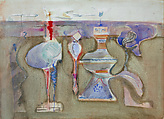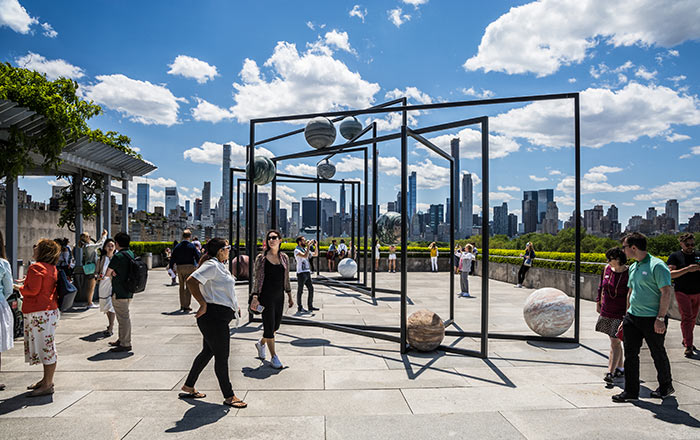Untitled
Mark Rothko American, born former Russian Empire, now Latvia
Not on view
This large untitled work belongs to a pivotal moment in Rothko’s career when he had developed a mode of abstract image making that drew upon not just Surrealist automatism and Jungian psychology but also his deep interest in archaic cultures of the Aegean and the Ancient Near East, interests shared by his friends, the artists Adolph Gottlieb and Barnett Newman. In 1943, Rothko famously proclaimed their kinship as well as their shared investment in subject matter that is "tragic and timeless."[1] Rothko’s compositions from this period, primarily made in watercolor on paper, evidence this engagement with universal and mythic ideas through a proliferation of pictographic or biomorphic elements that reference prehistoric forms of expression such as cave paintings, carved symbols, and glyphs. With its horizon lines and atmospheric haze, the submerged or emerging forms in the center of the composition have often been described in submarine or geological terms. The partly recognizable, mostly abstract forms have been interpreted as metaphors for the unconscious. Suggestive and nebulous in equal measure, the bulbous shapes become reminiscent of vegetal or animal forms, or vessels, such as Greek amphorae and lekythoi, or ancient anthropomorphic figures which the artist might have even seen at The Met (43.89.3; 34.126.53).
This image cannot be enlarged, viewed at full screen, or downloaded.

